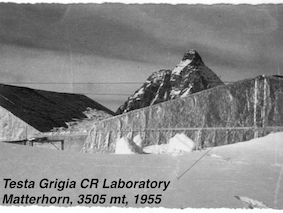Speaker
Mr
Stepan Poluianov
(University of Oulu, Finland)
Description
The era of direct measurements of solar energetic particles (SEP) is limited to the last few decades and largely overlaps with the Modern Grand Maximum of solar activity. However, for many purposes it is important to know the SEP flux on much longer time scale. This information can be obtained only using indirect proxies. Terrestrial ones, such as nuclides C-14 from tree trunks and Be-10 from ice cores may potentially resolve strongest SEP events, but cannot evaluate the average SEP flux in the past because of the geomagnetic and atmospheric cutoff effects. On the other hand, lunar rocks and cores collected during Apollo missions and studied later at the Earth, may provide useful information about the average fluxes of SEP throughout thousands
and millions of years in the past. This option has been explored earlier, and here we revise the approach, using the new yield functions of cosmogenic nuclides, specially calculated for the composition of studied lunar samples, and more realistic spectra of SEP and galactic cosmic rays.
Author
Mr
Stepan Poluianov
(University of Oulu, Finland)
Co-authors
Mr
Anton Artamonov
(University of Oulu)
Dr
Gennady Kovaltsov
(Ioffe Physical-Technical Institute, St.-Peterburg, Russia)
Prof.
Ilya Usoskin
(University of Oulu)

